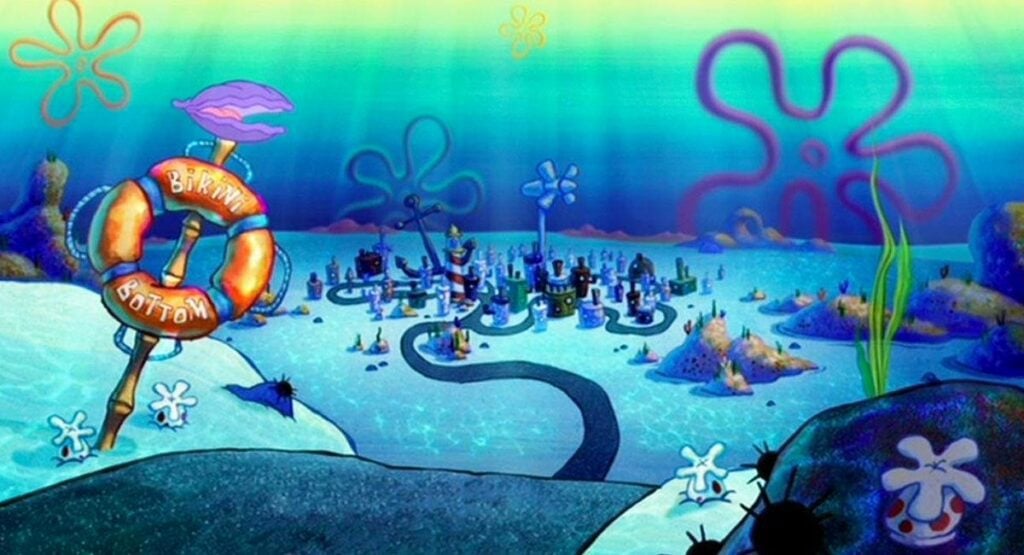SpongeBob SquarePants is an American animated comedy television series created for Nickelodeon by a marine science educator and animator Stephen Hillenburg. The series follows the exploits of the title character and his aquatic pals in the fictional underwater city of Bikini Bottom. But did you know where Bikini Bottom got its name?
Bikini Bottom was named after the Bikini Atoll. It is where the United States conducted nuclear tests from 1946 to 1958, which explains why all of SpongeBob’s explosions resemble nuclear explosions.
What Happened at Bikini Atoll?
Bikini Atoll is one of the atolls, which is a reef, island, or chain of islands that comprise the Marshall Islands located between Hawaii and the Philippines. Following World War II, the United States took control of the Marshall Islands and began nuclear testing in 1946. Between 1946 and 1958, the United States conducted about 67 nuclear weapons tests in the Marshall Islands.
The island’s 146 residents were forcibly relocated in 1946 with the promise of a return once the tests were completed. The residents were able to return to the island about twenty-five years later. But the island they returned to was devastated by nuclear bombs and drenched in radiation. They were eventually made to their home again.
The Castle Bravo test, conducted on March 1, 1954, was the most significant nuclear test performed on the islands. Its explosion was more powerful than Hiroshima’s and the test obliterated three islands.
Because of its unexpected size and an unaccounted-for wind, the Rongelap, Rongerik, Alinginea, and Utirik atolls were unknowingly subjected to nuclear fallout that fell from the sky like snow, exposing residents to high levels of radiation. (Source: Beyond the Bomb)
What is the Purpose of the Nuclear Testing?
The United States claimed that the tests were carried out to study the effects of nuclear bombs on US warships. They also stated that the location was chosen due to its remoteness.
The impact of the tests on the island’s residents, who were displaced and had to deal with the aftermath of the nuclear tests on their own, was largely ignored. (Source: Beyond the Bomb)
What was the Aftermath of the Nuclear Testing?
Radiation levels are still far above what is considered to be habitable today and are even higher than at Chernobyl and Fukushima. Over 600 people were found to have been overexposed to radiation, resulting in serious health complications for the rest of their lives.
Nuclear fallout contaminated the soils and water, rendering food grown on several islands unfit to eat. The majority of the food consumed on the islands is imported, which has resulted in a high prevalence of diabetes among the population.
High levels of diabetes and the long-term effects of radiation continue to pose a threat to the population, and a lack of easy access to healthcare makes treatment nearly impossible for many Marshallese.
The Marshallese, like many others, are a people who have been irreversibly harmed by nuclear testing and have been left to deal with the consequences on their own. (Source: Beyond the Bomb)
